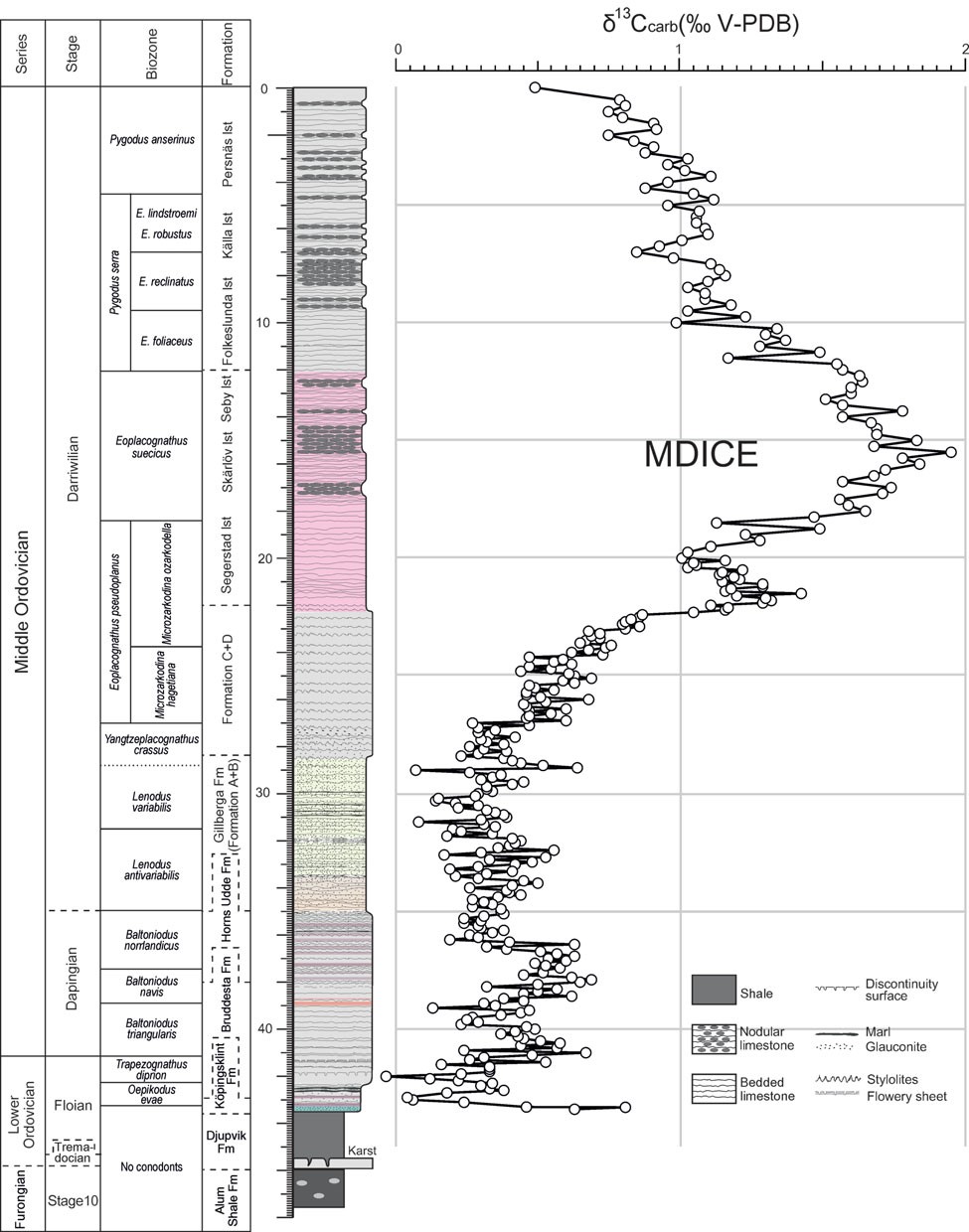
High-resolution δ13C chemostratigraphy of the Ordovician succession in the Tingskullen drill core from Öland, southeastern Sweden
δ13C chemostratigraphy has been accepted as a powerful tool for correlation of carbonate successions on a regional as well as global scale. A large number of studies focusing on the Ordovician Period have been published over the last ten years in order to clarify the framework of carbon isotope chemostratigraphy.
Recently, Dr. WU Rongchang from Nanjing Institute of Geology and Palaeontology, Chinese Academy of Sciences and colleagues from Lund university (Sweden) and University of Erlangen-Nürnberg (Germany) have carried out carbon isotope analysis of the Lower through Middle Ordovician cool-water carbonates of the Tingskullen core from the island of Öland in southern Sweden, revealing one of the few and most complete records of the MDICE (Middle Darriwilian Isotope Carbon Excursion) from Baltoscandia.
Based on a core section penetrating the condensed Lower–Middle Ordovician succession (46 m) on the island of Öland, southeastern Sweden, this study provides an integrated scheme for carbon isotope chemostratigraphy (313 samples) and conodont biostratigraphy (29 samples) for this period. The carbonate succession in the Tingskullen core records 12 conodont zones and 6 subzones, including the Oepikodus evae, Trapezognathus diprion, Baltoniodus triangularis, B. navis, B. norrlandicus, Lenodus antivariabilis, L. variabilis, Yangtzeplacognathus crassus, Eoplacognathus pseudoplanus (Microzarkodina hagetiana and Microzarkodina ozarkodella subzones), E. suecicus, Pygodus serra (E. foliaceus, E. reclinatus, E. robustus and E. lindstroemi subzones) and Pygodus anserinus zones in ascending order. The δ13C record reveals an apparently complete record of the MDICE, including a rising limb, a well-defined peak and a falling limb. The anomaly covers a thickness of c. 27m in the core and spans the Eoplacognathus pseudoplanus, E. suecicus, Pygodus serra and P. anserinus conodont zones. Combined with the new, detailed conodont biostratigraphy, the MDICE in the Tingskullen core can be used for detailed correlation with successions from Baltica, North America, the Argentine Precordillera, South China and North China.
This study is supported by the National Natural Science Foundation of China, the Swedish Research Council and Crafoord Foundation and the Deutsche Forschungsgemeinschaft.
Article information: Wu, R.C., Calner, M., Lehnert, O. 2017. Integrated conodont biostratigraphy and carbon isotope chemostratigraphy in the Lower–Middle Ordovician of southern Sweden reveals a complete record of the MDICE. Geological Magazine, 154(2): 334-353.

